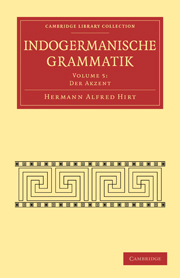Book contents
- Frontmatter
- Vorwort
- Contents
- Einleitung
- Erster Teil. Der Akzent der Einzelsprachen
- IV Kapitel. Das Griechische
- V Kapitel. Das Lateinische
- VI Kapitel. Das Keltische
- VII Kapitel. Das Germanische
- VIII Kapitel. Das Baltische
- IX Kapitel. Das Slawische
- X Kapitel. Die litu-slawischen Intonationen
- XI Kapitel. Der Hauptton im Litu-Slawischen im Vergleich zum Indogermanischen
- XII Kapitel. Das Armenische
- XIII Kapitel. Das Albanische
- XIV Kapitel. Das Indische
- XV Kapitel. Das Iranische
- Zweiter Teil. Der Akzent des Indogermanischen
- Autorenverzeichnis
- Sachregister
- Wörterverzeichnis
XIII - Kapitel. Das Albanische
Published online by Cambridge University Press: 05 August 2011
- Frontmatter
- Vorwort
- Contents
- Einleitung
- Erster Teil. Der Akzent der Einzelsprachen
- IV Kapitel. Das Griechische
- V Kapitel. Das Lateinische
- VI Kapitel. Das Keltische
- VII Kapitel. Das Germanische
- VIII Kapitel. Das Baltische
- IX Kapitel. Das Slawische
- X Kapitel. Die litu-slawischen Intonationen
- XI Kapitel. Der Hauptton im Litu-Slawischen im Vergleich zum Indogermanischen
- XII Kapitel. Das Armenische
- XIII Kapitel. Das Albanische
- XIV Kapitel. Das Indische
- XV Kapitel. Das Iranische
- Zweiter Teil. Der Akzent des Indogermanischen
- Autorenverzeichnis
- Sachregister
- Wörterverzeichnis
Summary
Allgemeines. Über den Akzent des Albanischen kenne ich keine besondere Untersuchung, Zweifellos ist er stark exspiratorisch, was sich auch in dem Ausfall oder der Schwächung von Vokalen zeigt, sowie in dem Auftreten zahlreicher Spiranten. In dem Werke von Pekmezi, Grammatik der albanesischen Sprache, Wien 1908 finden wir allerhand bemerkenswerte Mitteilungen über das Verhältnis von Akzent (Ton) und Quantität, das Verhältnis in der Stärke der Silben untereinander und manches andere.
Über die Silbentrennung vgl. Hermann 340. Nach ihm stellt sich das Albanische zu den Sprachen, die geschlossene Silben sehr gern öffnen, wenn es auch nicht so weit geht, wie das Urslawische.
Der albanische Hauptton liegt vielfach auf der vorletzten Silbe, aber es kommt sowohl Betonung der letzten wie jeder andern Silbe vor. Letzteres beruht z. T. darauf, daß der Ton in der Flexion der Nomina und Verba auf derselben Silbe bleibt, die ihn im Nom. Sing. und in der 1. P. Sg. Präs. trägt.
Anderseits enthält das Albanische zahllose Fremdwörter, die z. T. ihren Ton beibehalten haben mögen.
Für uns kommen nur die nicht sehr zahlreichen indogermanischen Bestandteile in Betracht.
Wenn alb. tetδ ‘acht’ wirklich dem idg. októ entspricht, so wäre der alte Ton erhalten geblieben.
Aber andere Fälle weisen auf eine Zurückverlegung des Tons auf die erste Silbe.
So z. B. motrδ: ai. mātá; avut ‘Dunst’: ai. abhrám?; baþδ: gr. ϕακός; ah ‘Buche’: gr. ὀξύη.
- Type
- Chapter
- Information
- Indogermanische Grammatik , pp. 180 - 181Publisher: Cambridge University PressPrint publication year: 2009First published in: 1929



